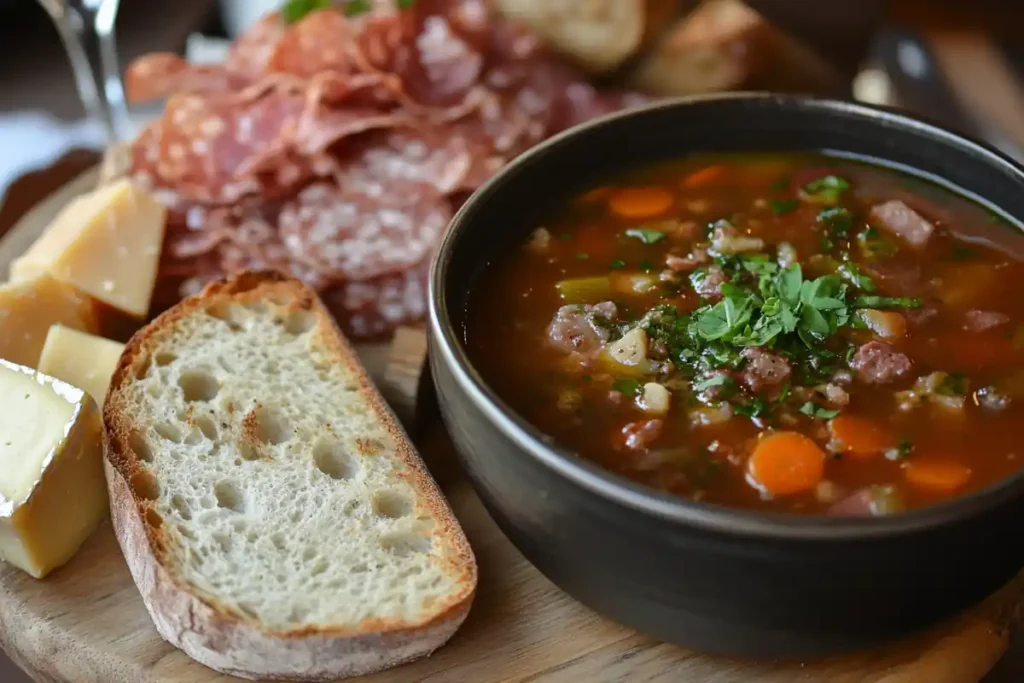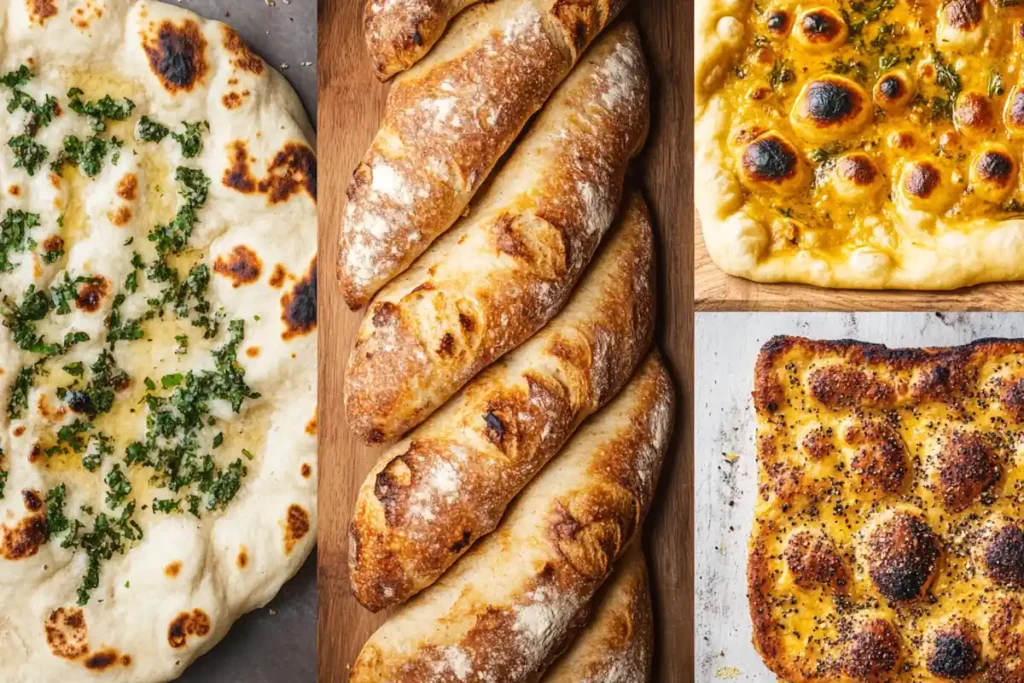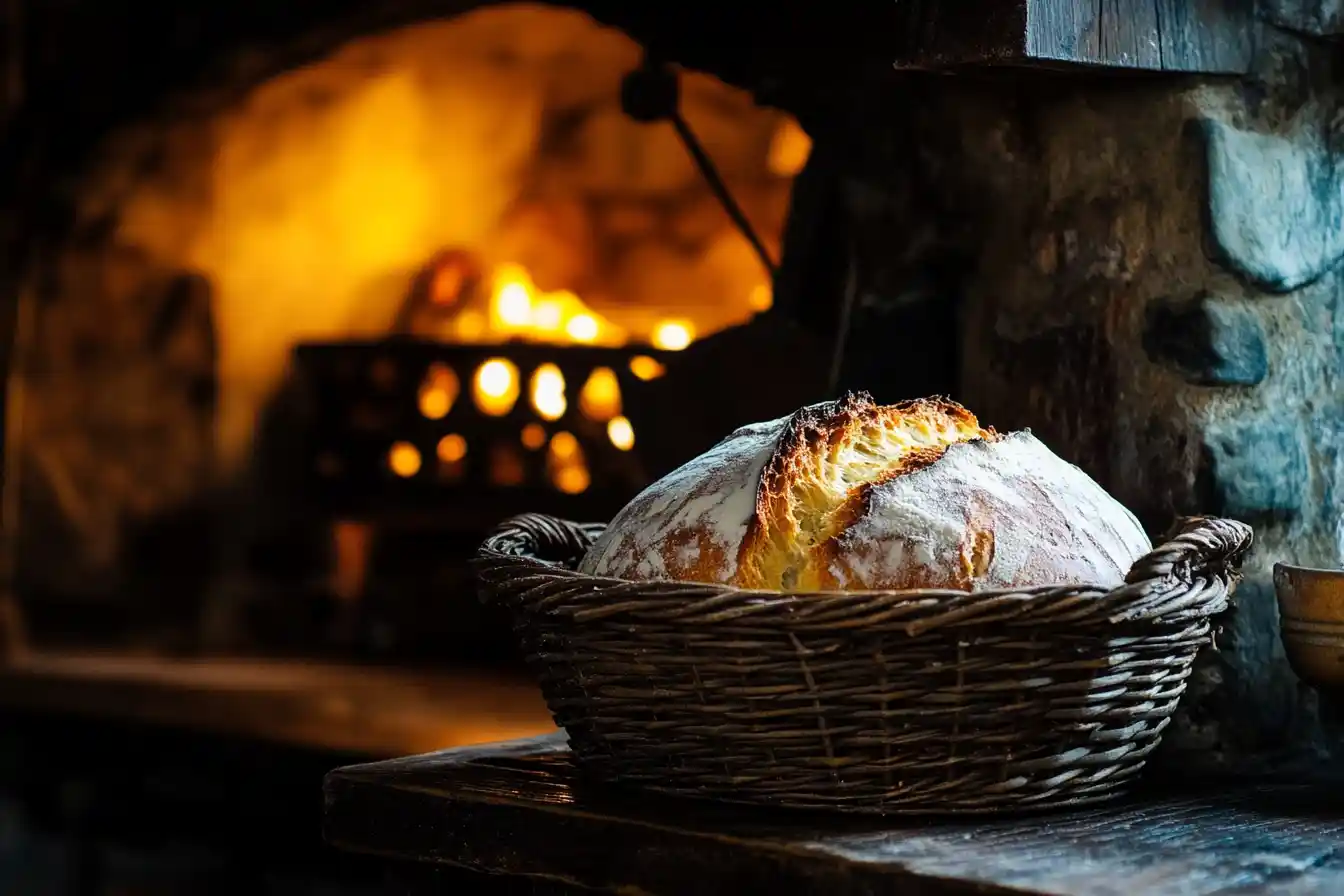What is considered hard bread? This article explores the characteristics of hard bread, examining its definition, how it differs from softer breads, and its various uses. We also address common questions about this type of baked good.
Exploring the Definition of Hard Bread
Firm-textured bread, such as hard bread, is known for its dense structure and substantial crust. This type of bread typically has a relatively dry interior and is made with minimal fat. Longer baking times at higher temperatures play a key role in creating its distinct texture, setting it apart from softer loaves. Additionally, the use of low-hydration dough further enhances its characteristic firmness.
The Science Behind a Hard Bread’s Texture
Several factors influence the texture of hard bread. Lower fat content in the recipe reduces moisture retention, while extended baking times further decrease the internal moisture, resulting in a thick and crunchy crust. Together, these processes define the texture of this type of bread. Additionally, gluten development plays a crucial role. Kneading the dough builds a structure that supports the formation of a firm crust. Consequently, the combination of minimal fat and longer baking times enhances this effect.
Key Differences: Hard Bread versus Soft Bread
The primary difference between firm-textured and soft breads lies in their texture. Soft varieties are tender with a moist interior, achieved through different ingredient ratios and baking methods. For example, soft bread often includes fats like butter or oil and requires shorter baking times. In contrast, dense breads have a distinct flavor profile due to their simpler recipes. Additionally, soft breads are often enriched with sugar and milk, giving them a sweeter and softer quality.
Learn more about What is Hard Bread Called? for a deeper understanding of its naming conventions.
Types of Hard Bread
Hard bread comes in various forms, each offering unique qualities. From European classics to everyday staples, the diversity of these breads might surprise you. Exploring the different varieties can help you select the perfect type for any occasion. Let’s examine a few prominent examples, keeping in mind that these represent just a handful of the most popular options.
Baguettes and French Bread
Baguettes, with their long, thin shape and crispy crust, are quintessential hard breads. Typically, they are made with simple flour, water, salt, and yeast. Accordingly, French bread, often confused with the baguette, is similar, although it sometimes has a slightly thicker and shorter shape. Both are known for their satisfying crunch. Furthermore, these breads are typically made with lean doughs and baked at high temperatures for that signature crust.
Want to explore What Is the Longest Bread to Make?? Dive into the intricate processes behind these culinary creations.
Sourdough’s Role
Sourdough is often considered a hard bread, given its typically dense crumb and substantial crust. However, the specific texture can vary quite a bit, depending on the hydration level. What makes sourdough unique is that it uses wild yeast and bacteria to create the bread’s tang. Basically, it’s more about the process and flavor than simply the hardness. Indeed, the fermentation process gives sourdough its unique flavor and chewy texture.
Italian-Style Hard Breads
Many Italian breads fit into the category of firm-textured loaves. For example, ciabatta is known for its large holes and airy interior, paired with a firm crust. Breadsticks, or grissini, are thin and crisp, serving as classic examples of this style of bread. Similarly, focaccia often has a firm crust while retaining a soft, open interior.
How to Enjoy Hard Bread

Hard bread’s robust texture makes it very versatile for pairings with different types of dishes. Chiefly, it pairs well with both savory and sweet items, making it a great choice for any meal. Specifically, it’s often used as an accompaniment. Eventually, you’ll find new and exciting ways to incorporate it into your culinary repertoire.
Pairing Hard Bread with Savory Dishes
Hard bread makes an excellent partner for soups and stews. Its dense texture stands up well to soaking, rather than becoming soggy. Comparatively, it’s also a good base for open-faced sandwiches or bruschetta because it provides a satisfying bite. Furthermore, think of it with cheese and cured meats. Moreover, it is ideal for dipping into olive oil or serving alongside a hearty charcuterie board.
Hard Bread and Sweet Treats
While not as common, dense bread pairs well with sweet items. For instance, it can be topped with honey or jam for a simple, satisfying snack. Its sturdy texture also makes it ideal for recipes like bread pudding, where it holds up well under moisture. Similarly, some enjoy it with a sprinkle of cinnamon and sugar or dipped in coffee.
Discover What Are the Hardest Breads to Make? for insights into the challenges of bread-making.
Baking Your Own Hard Bread
Hard bread recipes are relatively simple. Nevertheless, mastering the techniques to achieve the desired texture can take a bit of practice. Here are some general guidelines if you plan to make your own. Eventually, you’ll be baking your own crusty loaves every day. Additionally, understanding the science behind the baking process will help you get the best results.
Basic Hard Bread Recipe
Most basic recipes for dense breads include just four ingredients: flour, water, salt, and yeast. These form the foundation for many firm, crusty loaves. Achieving the ideal texture requires the correct ratio of water to flour and the proper baking method. For example, using a Dutch oven can help create the desired crust. A higher flour-to-water ratio is key to developing the dense crumb typical of this type of bread.
Tips for Achieving a Perfect Crust
To achieve a perfect crust, start by using a hot oven. In addition, steam in the oven is important, especially in the first part of the baking cycle. Moreover, using a baking stone or a dutch oven can help achieve a crisp crust. Finally, make sure to allow the bread to cool completely. Also, avoid opening the oven door frequently during the initial baking stages, as this can release the steam and impede crust formation.
Handling and Storing
Firm-textured bread is best enjoyed fresh, but proper storage can help it maintain its quality for several days. It’s typically better to store it at room temperature, allowing it to breathe. If refrigeration is necessary, use a bread bag to keep it protected. When ready to enjoy, you can revive its crispness in the oven. Proper storage is essential for preserving the bread’s texture and flavor.
For a unique twist, check out the Delicious and Easy Chocolate Bread Recipe to experiment with sweet variations.
Benefits of Hard Bread
Beyond its great taste and texture, hard bread has some nutritional benefits. Generally, it provides complex carbohydrates which are vital for energy. Especially if made with whole grain flour, it provides more fiber. Fiber is good for digestion and can promote a feeling of fullness. Moreover, whole grain options offer a variety of beneficial nutrients.
Nutritional Information
The nutrients in dense breads vary depending on the type of flour used. For instance, whole wheat varieties provide more fiber, vitamins, and minerals. Most of the calories in these breads come from carbohydrates. Due to their lower hydration level, they can feel more satisfying compared to softer loaves. Additionally, the reduced water content means a higher bread-to-weight ratio, which may contribute to greater satiety.
Dietary Considerations
Hard bread is quite compatible with various dietary preferences. However, it’s not generally gluten-free, as it is made with wheat. Accordingly, there are variations that might use other grains for people looking for non-wheat-based options. Thus, you might find some made with rye or spelt. Also, people looking to reduce their intake of saturated fat will often find hard bread a good choice.
Common Misconceptions
There are several misconceptions about firm-textured breads that need clarification. One common misunderstanding is assuming all crusty loaves are dense breads. Another involves associating freshness solely with soft textures. In reality, the baking process and hydration ratio primarily determine a loaf’s firmness. By understanding these distinctions, you can better appreciate the nuances of bread-making.
The Freshness Factor
Fresh hard bread does not need to be soft and fluffy to be high-quality. The characteristic crusty texture is an intended result of the baking process. Therefore, don’t confuse the hard crust with staleness. Specifically, a crunchy crust on fresh bread means it has been baked perfectly. Thus, the texture is intentional and a sign of a well-made loaf.
Crusty vs Hard Bread
While crusty bread can sometimes refer to firm-textured loaves, the terms are not always interchangeable. Some varieties with a crispy crust may still have a softer crumb. In contrast, true dense breads are defined by their compact interior. Ultimately, the texture of the crumb and internal structure are key to determining the correct bread category.
Hard Bread Around the World

Hard bread isn’t just a European tradition. It exists in many forms across the globe. Indeed, different cultures have their own unique editions of crusty loaves. Specifically, this demonstrates how universally valued hard bread really is. Furthermore, the regional adaptations reflect local ingredients and traditions.
Regional Variations
Across the world, each culture has created its own variations of dense, firm-textured bread, often adapted to local flavors. For example, certain African countries feature their versions of crusty loaves, while in Latin America, similar breads are often served alongside regional dishes.
Global Popularity
The global popularity of hard bread shows that its appeal crosses cultural boundaries. Undoubtedly, its great flavor and texture have made it a staple in many kitchens and restaurants. Therefore, its enduring appeal is obvious. Thus, whether enjoyed in a humble setting or in a fine dining experience, it continues to be a cherished food.
Curious why bakers might Put Milk Instead of Water in Bread?? Explore the science behind this choice.
The Role of Hard Bread in Culinary Traditions
Hard bread plays a significant role in various culinary traditions. Specifically, it’s not just a side dish. In addition, it’s often integrated into the main dishes or used as a base for more complex preparations. Indeed, it’s a versatile ingredient that enhances many different types of cuisine.
In Soup and Stew Recipes
In many cultures, firm-textured bread is used to thicken and enhance soups and stews. For example, it often features in rustic recipes, where it absorbs the rich flavors of the broth and adds a delightful textural component. Additionally, it serves as a satisfying base for hearty broths.
As a Base for Dishes
Hard bread makes an excellent base for various dishes. For instance, it works well for bruschetta, crostini, or open-faced sandwiches. Its sturdy texture holds up beautifully to toppings and sauces, creating a satisfying and flavorful experience. As a result, it’s a staple in many appetizers and light meals.
Whether you’re exploring the challenges of What Are the Hardest Breads to Make? or discovering the nuances of ingredients like milk in bread-making, hard bread deserves appreciation for its many attributes.
Frequently Asked Questions (FAQs)
What are hard breads?
Hard breads are types of bread known for their firm, dense texture, and substantial crust. They are typically made with minimal fat and baked at higher temperatures, resulting in a relatively dry interior and a very crusty exterior. Examples include baguettes and sourdough, though specific textures can vary.
What is hard bread called?
It is sometimes referred to as crusty bread. Its main defining characteristic is its density and low hydration level. Depending on the region, it may go by different names, but its firm texture remains the most recognizable feature.
Is sourdough a hard bread?
Sourdough can be considered a hard bread. However, its texture can vary significantly based on the hydration level and baking methods. While many sourdough loaves boast a substantial crust and dense interior, others can be softer. The process and flavor profile are what really define sourdough.
What is the difference between hard and soft?
The primary difference between firm-textured breads and soft breads lies in their texture and moisture content. Crusty varieties, such as baguettes, have a dense interior and a crispy, thick crust, often made with less fat and baked longer. In contrast, soft breads like white sandwich bread are tender with a moist crumb, achieved through higher fat content and shorter baking times. These differences stem from variations in recipes and baking techniques, which greatly influence their structure.
Conclusion
In conclusion, bread with a firm texture and thick crust offers unique culinary uses and nutritional benefits. While it may not be as soft as other varieties, its characteristic chewiness provides a distinct experience. Undoubtedly, this type of bread deserves appreciation for its many attributes. Whether you bake it at home or enjoy it alongside your favorite dish, it is a delicious addition to any table.
Looking for more? Check out our other links for even greater insights and inspiration!

